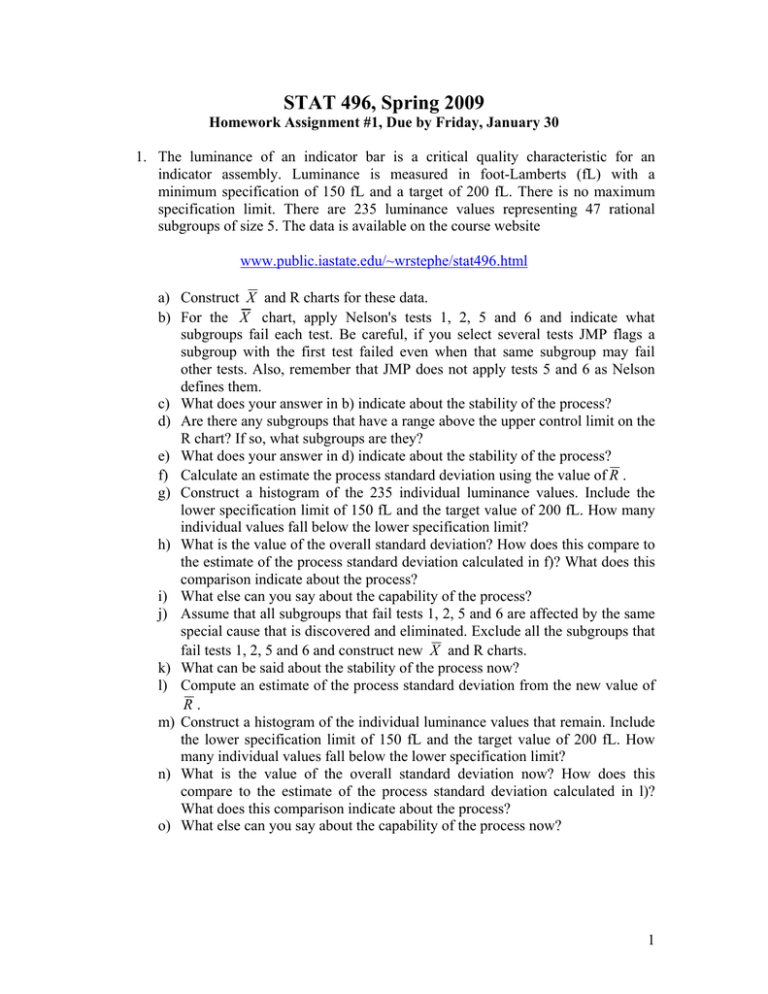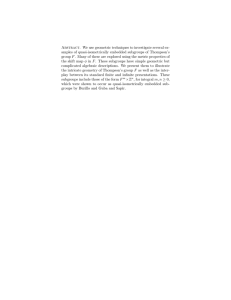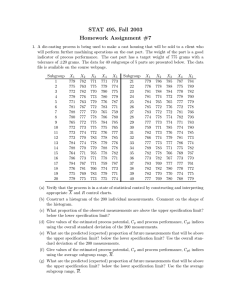STAT 496, Spring 2009
advertisement

STAT 496, Spring 2009 Homework Assignment #1, Due by Friday, January 30 1. The luminance of an indicator bar is a critical quality characteristic for an indicator assembly. Luminance is measured in foot-Lamberts (fL) with a minimum specification of 150 fL and a target of 200 fL. There is no maximum specification limit. There are 235 luminance values representing 47 rational subgroups of size 5. The data is available on the course website www.public.iastate.edu/~wrstephe/stat496.html a) Construct X and R charts for these data. b) For the X chart, apply Nelson's tests 1, 2, 5 and 6 and indicate what subgroups fail each test. Be careful, if you select several tests JMP flags a subgroup with the first test failed even when that same subgroup may fail other tests. Also, remember that JMP does not apply tests 5 and 6 as Nelson defines them. c) What does your answer in b) indicate about the stability of the process? d) Are there any subgroups that have a range above the upper control limit on the R chart? If so, what subgroups are they? e) What does your answer in d) indicate about the stability of the process? f) Calculate an estimate the process standard deviation using the value of R . g) Construct a histogram of the 235 individual luminance values. Include the lower specification limit of 150 fL and the target value of 200 fL. How many individual values fall below the lower specification limit? h) What is the value of the overall standard deviation? How does this compare to the estimate of the process standard deviation calculated in f)? What does this comparison indicate about the process? i) What else can you say about the capability of the process? j) Assume that all subgroups that fail tests 1, 2, 5 and 6 are affected by the same special cause that is discovered and eliminated. Exclude all the subgroups that fail tests 1, 2, 5 and 6 and construct new X and R charts. k) What can be said about the stability of the process now? l) Compute an estimate of the process standard deviation from the new value of R. m) Construct a histogram of the individual luminance values that remain. Include the lower specification limit of 150 fL and the target value of 200 fL. How many individual values fall below the lower specification limit? n) What is the value of the overall standard deviation now? How does this compare to the estimate of the process standard deviation calculated in l)? What does this comparison indicate about the process? o) What else can you say about the capability of the process now? 1





